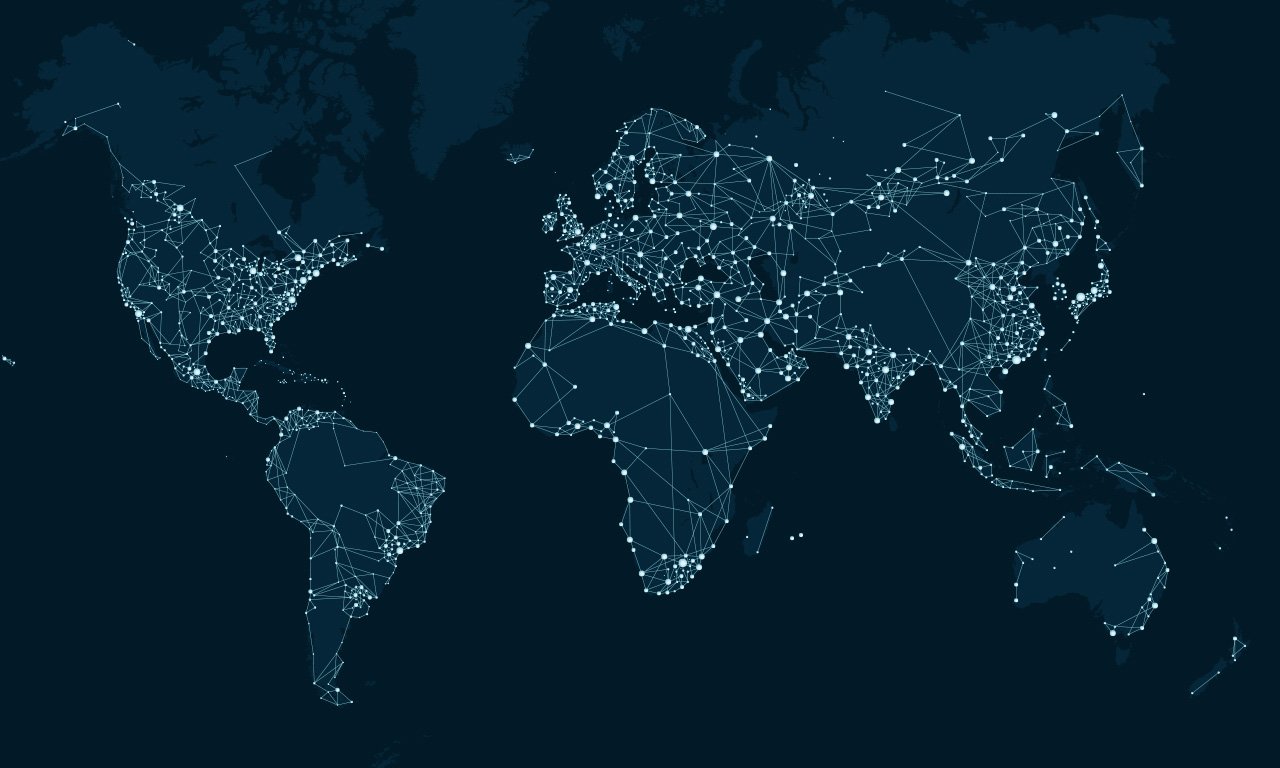Cybersecurity and Disinformation
Cybersecurity and disinformation are heavily intertwined in the U.S. and around the globe. With a pandemic, social unrest, and important elections happening all over, accurate information for the public is more critical than ever. In many places, human safety is at stake, and we need to be able to trust the information that we receive.
What happens when there are very few safeguards on that information? Anyone can publish a website, social media posts, or videos regardless of the accuracy of their message. People who are receiving misinformation or disinformation may not be aware that it’s even occurring.
According to Dictionary.com, misinformation is false information spread regardless of the intent to mislead. We’ve all told a story and forgotten the details. (Think about how the size of the fish increases every time you tell the story.) The childhood game of telephone is a prime example of how quickly misinformation can spread from one telling of a story to the next.
Disinformation on the other hand, is knowingly spreading false information. This could be spread through false or deliberately misleading news or political statements. Propaganda can have its roots in disinformation from time to time.
So, Where Does the Role of Cybersecurity Come In?
Cybersecurity and disinformation will remain heavily intertwined as the technologies that cybercriminals use continue to advance. As mentioned before, we are in turbulent times with the raging pandemic, social unrest, and contentious elections. Hackers may play on our sensitivities to these issues, providing disinformation, in hopes to get us to provide sensitive data in phishing scams.
They may go as far as registering fake domains and opening social media accounts, in an effort to make the entire scam appear legitimate from beginning to end.
But the stakes can go steeper than any one person as a victim. Entire countries can put out disinformation campaigns in an effort to sway another country’s election. Fake charities are set up as a way to scam innocent people into providing money.
These and other methods often have very real-world ramifications.
Cybersecurity and Disinformation – Taking Action
Disinformation can be a threat to society as a whole. It’s important for cybersecurity officials to make a plan and take action against harmful disinformation. IT departments, technology professionals, and government officials must work together to protect the integrity of organizations and institutions while protecting citizens.
Social media companies have taken action with disclaimers about the accuracy of a post, or removing it from their platforms altogether. IT officials can work to have fake sites, or spoof sites taken down. They may spoof large companies or agencies in an attempt to fool people.
It’s important to realize that cybercriminals won’t operate with the same ideals or ethics instilled in most of us. The disinformation that they weaponize in order to exploit people online can and should be stopped. IT and cybersecurity professionals are in a unique position to put a check on this type of crime.
The Pandemic’s Role Speeding Up Cybersecurity
Speeding up cybersecurity efforts has been an initiative of many IT departments and technology professionals since the pandemic began.
Work from home initiatives were always going to be something that IT departments and security experts needed to figure out. But the pandemic led huge numbers of the workforce out the door of the building, and to their private home office. Many businesses are seeing benefits, but they are also forced to deal with the risk.
Businesses are tasked with the tall order of improving productivity from remote locations, while mitigating dangerous threats at the same time. According to a survey of 800 businesses conducted by Microsoft, providing secure remote access to resources, apps, and data was the number one challenge reported by security professionals. This necessitates speeding up cybersecurity efforts.
Cyberattacks During the Pandemic
Cybercriminals understand that when more employees work from home, they become a more attractive target. Below are some common cyberattacks that businesses need to be prepared for:
Phishing – Employees should be careful when it comes to opening emails from outside the organization, especially those that may be asking for money or some form of sensitive personal information.
Ransomware – A Covid-related subject line may appear on malicious ransomware emails. It’s important for organizations to prepare their employees for this reality, and to be ready by backing up essential data.
DDoS – More users trying to access services remotely at the same time, can open up more vulnerabilities for the system to be attacked. It’s important to be prepared.
Speeding up Cybersecurity Means Securing Employee Home Networks and Personal Devices
While no one was exactly ready for the pandemic and its resulting impacts on businesses in 2020, there are some measures that can be taken to improve security on employee’s home networks and personal devices. Speeding up cybersecurity measures will help to prevent any worst-case-scenarios that may emerge down the road.
Using a Virtual Private Network can add a layer of security. It may also help to make sure that employees have access to their device instruction manual so they can follow recommended manufacturer security measures.
The instruction manual may provide additional insight such as:
- Setting up two-factor authentication
- Enabling automatic updates for operating software, routers and modems
- Configuring security and firewall setup
- Establishing lock screens
Adjusting to the Times
As the pandemic rages on, companies will need to get used to operating under less than ideal circumstances. Adjustments will need to be made to maximize productivity, and the necessary security adjustments will surely follow. This of course means an organized effort in speeding up cybersecurity.
The types of integrated security measures listed above will need to be followed by all companies, small, medium and large. The work from home movement is no longer something that can be forestalled. The best thing that companies can do is to hire experienced cybersecurity and IT personnel that can help to institute solid planning measures that maximize that productivity while protecting corporate data at the same time.
Educating employees on how to make their work-from-home experience a safe one is a big part of these measures. Employees must understand the looming threats, and how to decrease the risk of falling victim to a cyberattack.
What are the Newest Cybersecurity Threats in 2020?
There’s no secret that cybersecurity threats in 2020 have been on the rise for businesses and organizations. Advancements in technology and the creativity of the individuals perpetrating these crimes have both been on the rise. At the same time, organizations have become more reliant on customer data, which can at times be sensitive.
All of this adds up to a perfect storm. Below are some of the most common cybersecurity threats in 2020. It’s important to do more to protect your data and to understand that professional data recovery may be your best option to get it back in the event of a loss.
Common Cybersecurity Threats in 2020
Cloud Vulnerability
Cloud storage provides a significant asset to businesses looking for alternative ways to store their data. But storing sensitive data related to employees or business operations with a third-party host can present a risk. Below are some of the cloud vulnerability threats that IT departments and organizations can prepare for:
- Data breaches
- Misconfiguration
- Account hijacking
- DDoS
Major cloud providers are working to improve their security, but they are not immune from attack. But IT departments need to be ready to secure their own data.
Artificial Intelligence
As AI is utilized for many new business applications, hackers and those looking to do malicious harm are finding ways to incorporate it, too. This new tool can be used to make malicious software more sophisticated and threatening. It can be used to detect system vulnerabilities and break-in.
Phishing
Phishing relies on misleading the victim into giving up compromising information. This could be login credentials, credit card information, or a social security number. Cyber criminals are developing new methods and strategies, often preying on victims who often simply want to do the right thing.
Deepfakes
This is the term given to a fake audio or video file, often used for malicious reasons. With the emergence of AI, it’s become easier to create computer-generated videos of prominent figures, while recreating the message. This can be used for political figures, CEOs, celebrities, or more. They have become high quality and believable.
Preparing for Cybersecurity Threats
Organizations must be ready for incoming threats from cybercriminals. The internet has always had an element of people looking to do harm, that’s not new. But the sophistication level is ever on the rise.
IT departments can educate employees to the common threats and help them to recognize when their hardware or their actions may pose a threat. Strong, regularly changed passwords improve security. Two-factor authentication also helps to prevent attacks. It’s also important to keep software up to date to prevent threats.
Backing up data in multiple places can help you maintain access and prevent common business disruptions. Encryption can also help to protect it should it fall into the wrong hands.
You can invite employees or people that you trust to hack your own system so that you may understand where any potential vulnerabilities may exist. And make sure to fix them. When you are proactive regarding data, you can protect your organization from these common cybersecurity threats in 2020.





















